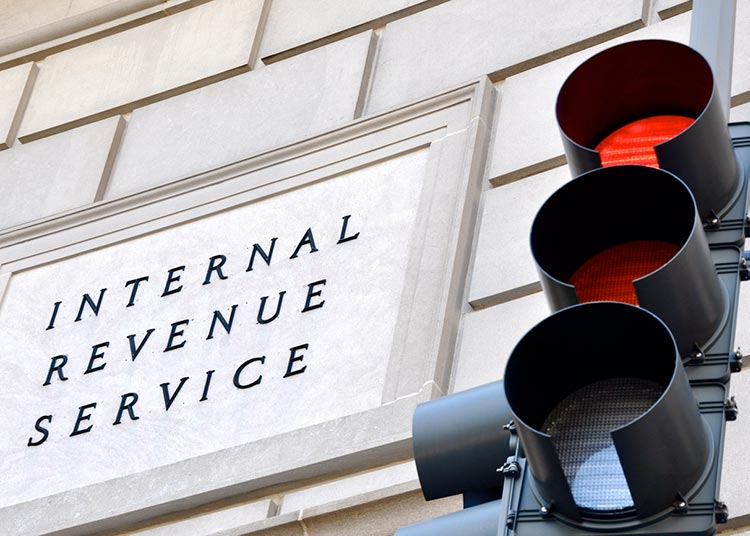
Filing tax returns can be a complicated and messy process, especially for real property owners, 1031 exchangors, or business owners who may not fully understand the various tax codes that affect their returns.
Instead of tossing their hands in the air in despair, taxpayers who are seeking relief from a difficult tax situation or have questions about how to properly complete their returns can receive guidance on complex tax law or ambiguous tax treatment by writing to the Internal Revenue Service. The response by the IRS is called a private letter ruling (PLR).
Let’s take a closer look at how the PLR process works.
Details On Filing A Private Letter Ruling
Private letter rulings are responses by the Internal Revenue Service to an individual taxpayer’s request for clarification. If you thought filling out a tax return was a complicated process, grab a chair and take a seat, because the process for filing a private letter ruling is even more onerous and may require the insight of a certified tax professional.
According to the IRS, a PLR is issued only after an individual taxpayer presents the agency with a set of facts in writing. The ruling interprets those facts and applies them to applicable tax laws. The guidance or clarification published in a private letter ruling is applicable only to the individual taxpayer’s circumstances and shouldn’t be considered tax law or precedent by other individuals, the IRS cautions.
Like many things when dealing with government bureaucracies, the wheels can turn quite slowly in the PLR process – it can take up to nine months, or longer, for the IRS to issue a ruling after receiving a request for a private letter ruling. The IRS’ Office of Chief Counsel noted that it attempts to respond to private letter ruling requests within 180 days after receiving the request.1
Filing a PLR is costly as well: In July of 2022 the fee for filing a PLR increased to $12,000. Taxpayers who engage an attorney or tax professional to assist with the difficult PLR filing process will incur additional expenses that could total several thousands of dollars. Payments for PLRs are made through pay.gov. Taxpayers visiting the site should enter “IRS Chief Counsel User Fees” in the “Search the Forms” box to find the following: Form 1128, Form 2553, Form 3115, Form 8716, Private Letter Rulings, and Closing Agreements. The IRS also suggests that once payment is made, taxpayers should mail the completed IRS and PLR forms, along with a copy of payment receipt, to:
Internal Revenue Service
CC:PA:LPD:DRU
P.O. Box 7604
Ben Franklin Station Washington, DC 200442
According to the Journal of Accountancy, the IRS won’t rule on matters it feels are already firmly addressed in previous court decisions, statutes, rulings, or regulations. Instructions for filing a private letter ruling can be found in the first revenue procedure publication issued by the IRS each year.
Taxpayers can oftentimes find contact information on previously published rulings where they can informally run their proposed ruling requests by an IRS employee. You also may be able to request a pre-submission conference regarding your ruling request.
Some of the information that is required in your PLR includes:
- A comprehensive analysis of all pertinent facts, and a complete statement of those facts
- Written statement declaring if the issue affects any previously filed tax returns
- Written statement listing all authorities supporting and running contrary to the request
- Taxpayer’s signature, list of all representatives authorized to submit information, and signed statement regarding the truthfulness of facts being presented
Putting it all Together
Private letter rulings are requests to the IRS by individual taxpayers to clarify or provide guidance on unique, unusual, or extremely complex tax situations in instances where tax law is ambiguous or unclear. PLRs can help taxpayers avoid making serious blunders that expose them to tax violations.
Private letter rulings are applicable only to the taxpayer filing the request, so the rulings aren’t binding for all taxpayers. Rulings typically are made public within three months of being issued, but all private taxpayer information is redacted.
Consult with a tax professional to gain additional insight into how the PLR process works and whether it’s in your best interest to file one.
1Letters, Rulings, Information Letters and Closing Arguments, IRS, https://www.irs.gov/irm/part32/irm_32-003-002
2IRS Chief Counsel User Fees For Form 1128, Form 2553, Form 3115, Form 8716, Private Letter Rulings and Closing Agreements Instructions, IRS, https://www.pay.gov/FormServer/IRS/help/irs_counsel_rulings.pdf
This material is for general information and educational purposes only. Information is based on data gathered from what we believe are reliable sources. It is not guaranteed as to accuracy, does not purport to be complete and is not intended to be used as a primary basis for investment decisions. It should also not be construed as advice meeting the particular investment needs of any investor.
Realized does not provide tax or legal advice. This material is not a substitute for seeking the advice of a qualified professional for your individual situation.



